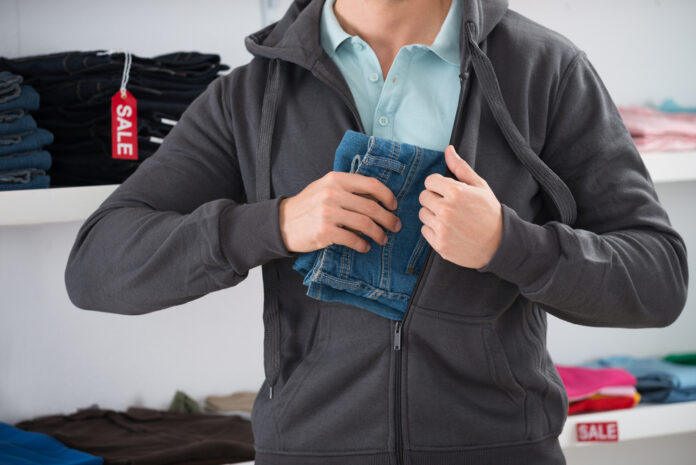Every business owner knows the holiday season is the busiest and most profitable time of the year for retail stores. Unfortunately, shoplifters view busy stores as the perfect opportunity to target and steal high-value items.
Retail theft in the US is said to cost business owners a whopping $61.7 billion in 2019, up from $50.6 billion the year prior. Smash and grab incidents, where thefts are done after breaking into shops, are part of a larger phenomenon of organized retail crime. Crime rates have jumped since 2019, with desperate shop owners doing whatever they can to secure their goods. For small shop owners, targeted ongoing theft leads to financial difficulty and eventual closure.
Business owners and their staff need to be constantly on the lookout for opportunistic thieves, however, regardless of their efforts, it’s a losing battle for most businesses. Fortunately, there are ways to deter thieves and keep your hard-earned profits.
Pandemic Causes Increase in Shoplifting — Further Damaging Retail Profitability
With the huge financial strain caused by the pandemic, it has become evident that people are desperate — and while our hearts go out to those in need, stealing directly impacts the lives of others. Store security not only protects retailers from financial loss, however tough, but preventative measures also deter thieves and help lower crime.
The primary psychological drivers that motivate shoplifters have shifted during the pandemic — being less influenced by want or need and more increasingly driven by emotion, stress, anxiety, and depression.
The answer to addressing these issues lies in finding the right security solution based on your business needs — for instance, a clothing store has very different needs from a fruit market or grocery store. Each store type invariably has its own unique solution to deal with theft; however, what are common are the methods used to overcome these issues.
Lean Startups and Small Businesses at Risk from Shoplifters
For many new businesses, getting your business cash flow positive is a major hurdle — startup costs, stock acquisition, store lease, and employees present a significant investment.
Eager to start a business, lean retail startups underestimate the value of store security and the impact retail theft can have on their business. So, what can stores do to keep their products safe?
Retail Theft Prevention — The Steps to a Truly Secure Store
Luckily, there are several ways you can stop thieves in their tracks using next-generation security measures. The transition to next-gen store security has been a long one, but retailers now see the time has come to step up security. Depending on the threat present and the level of coverage required, there are some high-tech solutions you can implement in-store that are affordable to just about every retailer.
What’s important to remember is considering the overall cost of upgrading store security is the compounded cost over time to your business. Every item stolen from your store directly impacts business profits so taking preventative action and upgrading store security is a good investment.
Here are some ways you can beef up store security:
- Warning and prosecution signage
- Security cameras
- Retail security tags
- Inventory management
- Dressing room design and monitoring
- Employee background checks
- Optimizing store layout
- In-store security personnel
- Random bag checks
- Employee training
Warning and Prosecution Signage
Your first line of defense should include well-placed signage throughout your store to warn those caught stealing that will be prosecuted.
Depending on the level of security your store has implemented, use several different signs to re-enforce your message, for instance:
- “Warning: All activities are recorded to aid in the prosecution of shoplifters.”
- “Stealing is an offense and will be prosecuted to the fullest extent of the law.”
- “Warning this store is under constant video surveillance — shoplifters will be prosecuted.”
Although all the above messages convey a similar message, alternating your message delivers a greater impact to targeted individuals. Signs that include graphics like video cameras, hand-cuffs, etc, further strengthen message impact.
Signs alone can deliver a significant reduction in store theft simply by reinforcing a message that any law-abiding individual would already know. The good news is signage is the cheapest form of security you can implement in-store. Unfortunately, signage alone does not stop determined and experienced shoplifters. So let’s take look at other ways you can stop thieves.
Security Cameras
Security cameras are fast becoming the norm in the majority of retail stores due to the prevalence of shoplifting. Next-generation technology is constantly changing and advancing the feature-set of new security systems while lowering costs. Some of the features you can expect from video security cameras are:
- HD video surveillance
- Heat and movement detection and tracking
- Pan and tilt
- Night vision
- Facial recognition
- Two-way audio
- High storage capacity
- Remote monitoring and cloud storage
- WiFi and mobile chip connectivity
- Water resistance
- Solar-powered and battery backup
While you may not require all of these security features in your retail store, many of them can be extremely useful in deterring shoplifters — especially for those serious about store security.
For instance, the majority of security surveillance camera systems are available in packages of 4-6 cameras which offer significant cost savings. More importantly, multiple cameras provide retailers with how your store security is perceived by would-be shoplifters.
Movement detection and tracking can be particularly useful in customer perception that their movements are being constantly monitored — turn on tracking for 1 or more of your cameras, while setting others to fixed positioning.
Night vision, power backup. and cloud storage are all ways you can defeat efforts from sophisticated thieves.
Facial recognition systems enable retail owners to collate data on cloud systems and store information on individuals of concern, including pictures. Alert staff of potential thieves via an inbuilt In Loss Prevention Network that links to all employee’s phones.
When purchasing a camera, be sure to carefully analyze the pros and cons of each camera. Of particular importance, is the definition of the camera — low definition cameras offer little value in identifying offenders; rather, aim for HD cameras of 4k or more.
Retail Security Tags
Shoplifters are primarily the key suspects when it comes to inventory shrinkage, especially in the clothing industry, and the statistics do not lie. A little over 9% of all Americans are shoplifters, and this shocking number is largely focused on one target — designer clothing.
The clothing industry is a lucrative one, and high fashion seems to be on everybody’s mind. Most shrinkage occurs in high-end or medium stores — the most desirable and least affordable make high ticket items lucrative targets.
Clothing security tags were introduced several decades ago as a way to combat this up-trending menace with moderate success. Security tags are relatively small and can be fitted on a wide range of apparel products, like shoes and clothing items. Thieves, however, never stop devising ways to overcoming this technology through removing or wrapping tags so the shoplifters do not activate the alarm when passing through the security screens.
The internet has become an incredible resource available to would-be shoplifters on how to overcome the various security tag systems available — making it easier for shoplifting to be very lucrative.
Companies like OMAC, however, are changing the way security tags work by incorporating new technologies and designing new locking mechanisms that overcome persistent attacks by experienced thieves. OMAC is so confident about its clothing security tag locking technology that it challenges store owners with the opportunity to crack its tag and win 500 free OMAC security tags.
Aside from being virtually impenetrable, the clothing tags are easy to fit, do not diminish the customer shopping experience, and are easily removed at checkout using the appropriate tool — without damaging the merchandise in any way.
Other Ways to Lower Inventory Shrinkage
Security cameras and tags go a long way to help protect your merchandise, but there are a variety of ways to further reduce stock loss by introducing sophisticated inventory controls. Vetting employees with background checks, optimizing your store layout, employee training, and the presence of in-store security personnel all contribute to stamping our shoplifting in your store.
Conclusion
Every effort you make as a store owner or manager to increase store security and stop stock loss is a wise investment. Bottom-line, a profitable business is a happy business, providing owners with an opportunity to not only enjoy the benefits of all their hard work but also reward the employees who support those efforts every day.
Find a Home-Based Business to Start-Up >>> Hundreds of Business Listings.

















































